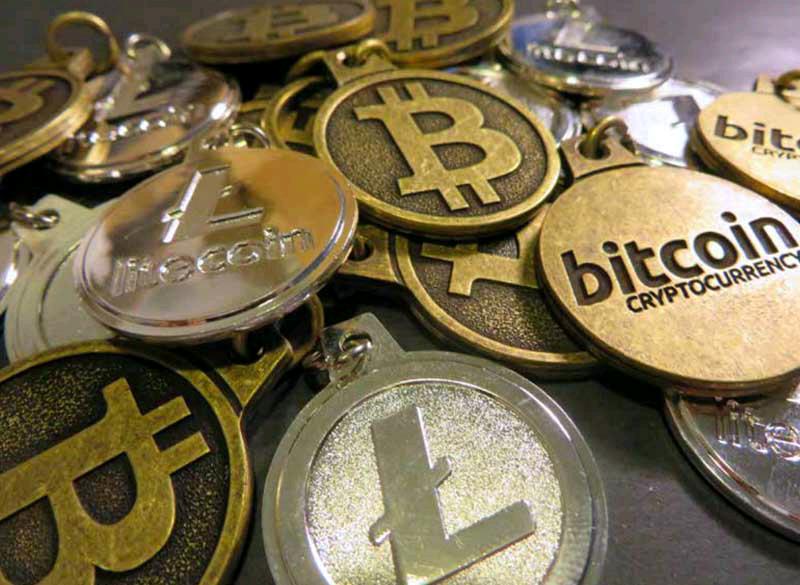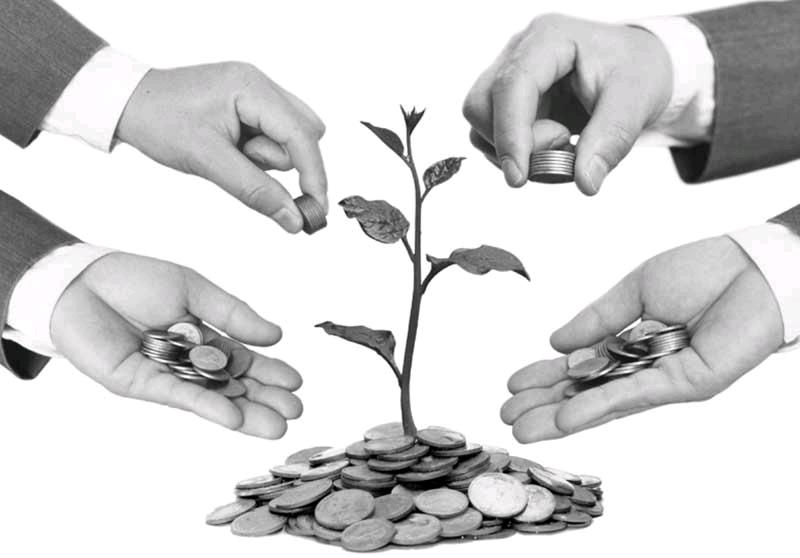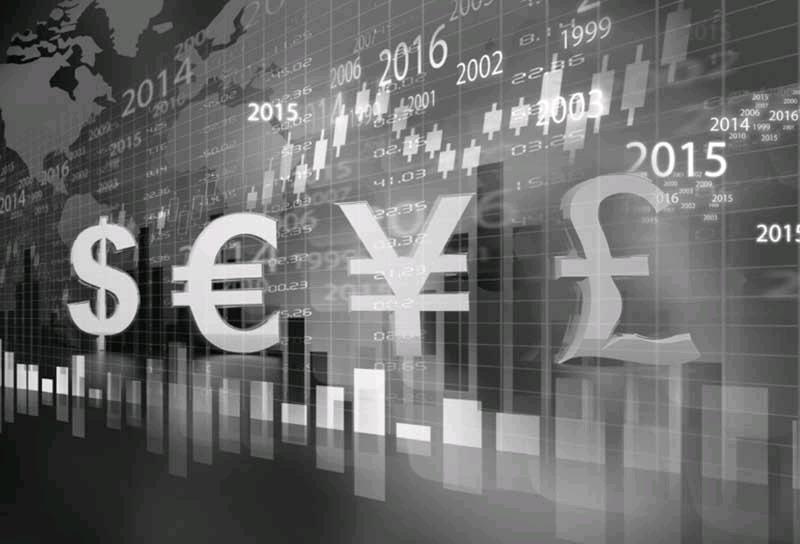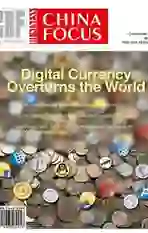Digital Currency Overturns the World
2017-01-10
Currency Revolution and World Power Fate
The Second World War was near c l o s u r e seventy years ago in 1944. The British Empire fell from its global master status, turning into a debtor nation from creditor nation. However, the United States leapt to the largest creditor of the world, holding the biggest amount of gold (occupying 59% of the global official gold storage amount) and a wholesome finance operation plan (including building up a world bank and international monetary fund) .
Forty-four countries approved an agreement lead by the United States in July, 1944 in Bretton Woods in New Hampshire. It linked up US dollars with gold and other currencies. Finally, pound was replaced by US dollars, which became the only storage, clearing and trading currency in the world.
Today, thanks to reform and open polices, global trading and the expansion of The United Statess debts, China has gradually turning into the largest creditor of the world. However, the internationalization of the RMB is slow due to the already solidified global US dollars operation system. Under the current economic and trading system, its hardly possible for China to create a RMB version of Bretton Woods System in the new century. The United States are even unwilling to participate in the Asian Infrastructure Investment Bank launched by China.
The global economy also complains a lot about the currency system led by US dollars because the periodical fluctuation of US dollars only brings huge risk and harm to the global economy. But the United States can always head off the danger. Accepting the international currency status of US dollars has largely become threaten. However, the logic of replacing one credit-based national currency by another one to work as the international currency is no more attractive. What the RMB needs to face is all countries and citizens expectation of reforming of the new currency.
Only Digital Currency is Qualified to Replace US Dollars
The economy recession in 2008 strike the world. Relying on the global purchasing and financing capability of US dollars, the United States recovered from the financial crisis quickly by stimulating the economy on rather low cost. However, the rest countries around the world are not able to go back to the prosperous times before 2008. In recent two year, with the continuous strengthening of US dollars, each country has to deal with external flow of capital and economic downturn by endless devaluation of domestic currency.
What exact kind of currency is able to cross the periodical and sovereign trap? It seems that apart from gold no other currency can be such reliable. However, the monetary attribute of gold can be suppressed in a long time due to its material attribute and the high cost of playing the role of medium of exchange. Whats more, the Federal Reserve and central banks of each country unanimously object to let the gold play this role again.
With the development of technology, especially the rapid advance of internet technology, some of the traditional solidified logics of the world has been changed. People not only use internet to protect their own rights, but also create some things ought to have been created by the government. The financial crisis in 2008 again warned people across the world of the shortcomings of paper currency. The real digital currency was born in 2008 exactly. A man named Zhong Bencong invented a payment method which can skip the intermediary like banks. It even doesnt need central banks to provide medium of exchange (currency).
Nowadays, the name of Bitcoin is well known all over the world. Millions of people across the world are highly concerned with the development and future of Bitcoin. The encryption and distributed block chain technology of digital currency has attracted global businesses including professional organizations such as the Peoples Bank of China, Goldman and Morgan.
Some regard Bitcoin as the real tech method rather than legal means in human history, protecting private property in a practical way. Bitcoin is circulated across the world in a short time due to peoples great trust on this heart-touching tech method. Currently, the market value of Bitcoin is over 10 billion US dollars, with a daily trading amount over 1 billion US dollars, comparable to a listed enterprise with an explosive rise.
For Chinese, the real meaning of internationalization of the RMB is not to replace US dollars from the historical perspective, or become the second US dollars. Even though the RMB really replaces US dollar some day, the final result will not be an idealized or sustainable development path. US dollars will not be replaced by a second similar currency. It is paper credit currency like US dollars that replace the gold to be the global currency. Another metallic currency will not take the role.
What can conquer US dollars in the future is a kind of currency which can surpass US dollars credit, or exceed its convenience, equity and credibility. In the short term, only digital currency based on encryption tech and block chain can shake off solidified US dollars system and meet the standards to replace US dollars, both from theoretical and practical level.

Digital Currency Means a Lot to China
The research of digital currency is a significant historical opportunity for China, although it may only add brilliance to US economic systems splendor. If China misses this chance, the RMB may follow the same mistake of the yen to be a forever shadow currency of US dollars, no matter how strong the economy can be (just like Japan in 1970s and 1980s). The only way is to wait for huge fluctuation of the United States till it quits the historical platform. The timing cost of this waiting is too high. Thus, the researching of digital currency is actually finding better way out and more possibility for the RMB.
Recently (on November 9, 2016), the Peoples Bank of China issued a recruitment announcement of its on its website, the three open positions are structural designer and researcher of digital currency and related underlying platforms soft and hardware systems, researcher of key encryption tech used in digital currency, and developer of symmetric and asymmetric cryptographic algorithm, verification and encryption. The applicants shall have working experience of systematic structural designing, block chain tech development and operation and big data platform developing.
It shows that the Peoples Bank of China has proceeded the releasing of digital currency into a practical period rather than primary investigation or discussion. The above mentioned positions directly serve for the banks print science research center, which will take charge in the exact money issue, printing and anticounterfeiting. As long as this final step is completed, the money will begin to circulate in the society.
Reasons for the Issue of Digital Currency by the Peoples Bank of China
1.Strategy
Strategy has been mentioned a lot in the previous content. In the future, the RMB will battle with sovereign credit currency including US dollars, involving final distribution of global finance bonuses. China will not be satisfied staying at the period of sharing population trading dividend. Finance bonuses need strong currency credit and finance clearing network to support.
Even though the US dollars will come to its end, the RMB clearing system can hardly replace US dollars system in clearing and payment. The reason is that changing trading habit is rather difficult, unless the whole trading mode is totally overturned. That is to say, even if Microsoft has no business, its patent income annually will still hold tightly Bill Gates position in the world richest man list. CIPS has been launched for a long time, but it is hard to shake the SWIFT. Users habits can hardly be changed by CIPS, which fails to surpass all functions and modes of SWIFT.
However, magic happens sometimes. The great digital currency tests start at this time. Based on digital currency technologies including encryption, decentralization, block chain distribution, digital currency totally overturns the previous clearing system such as SWIFTs logic. Digital currency technology is an independently operated technology which can totally replace the current global US dollars clearing system.
Bitcoin is still in its testing phase. The current capacity and efficiency of Bitcoin block chain capacity and efficiency are not capable to back the global finance trading clearing. But its operation security, stability and positive participation is beyond currency researchers imagination. Thus, to invest in researching and testing of digital currency from the strategic prospective will help open international market. It bears significant strategic meaning for the RMB, and even the whole Chinas finance fields rise.
2.Trend
Since 2000 the volume of money issuance in China has grown from 13 trillion to 150 trillion. However, the cash percentage is declining from 13% in 2000 to the current 4%. That is to say, the cash occupies 13% of the money issued in 2000. However, the cash only takes 4% of the money issued currently, which means that each 100 yuan we issue only has 4 yuan truly printed into paper money ,leaving the rest 96 yuan are all kept in accounts. In short, it is just a number recorded in all kinds of financial accounts.
The digitalization of currency has turned into a trend. Three years ago, no one has thought of downloading Wechat or Alipay by a smartphone to complete the process of withdrawing, paying money at few minutes. The require- ment of cash is declining.
China is not the only country facing this trend. The whole world is following this trend. As is suggested by statistics by Swedens central bank, the paper money in circulation has declined by 40% since 2009. The country is considering issuing digital currency and drop cash in circulation. Actually the Danish government has launched a series of moves, including promoting a program free from cash. It encourages stores and service places to choose trade without cash. Retailers are allowed to accept automobile and credit card payment only. It is possible for Denmark to be the first nation free from cash.
The paperlessness of currency trend bears two meanings, one is to digitalize the current currency, the other is to totally change the system and issue new digital currency to replace the current currency. The former bears little technology, which is just a changing of usage mode. The latter is to directly change the supply and management mode of current, which is also the biggest challenge of issuing digital currency.
From the perspective of security and internalization of the RMB, digitalization of currency is not enough to meet the future requirement of Chinas development. Digitalization cant get rid of central clearing system. It is not com- petitive in the international market. The credibility of the US dollars is far beyond the RMB, which makes the former the direction and end point.
Will Paper Money Disappear Soon?
When you still have the fantasy of counting money until your hand cramps, the future currency may only need you to take a look at the digital account. There might be no paper money in the future. If digital currency is issued will the cash held in our hands still matter?
The latest central banks recruitment information reveals that the life of paper money has already entered the countdown. Printing Science Institute, the directly affiliated institution of the Peoples Bank of China, announced its 2017 annual recruitment plan on the official website. It will hire six professionals with masters or doctoral degree for digital currency research and development work, which makes digital currency once again become a hot topic of public opinion.
Yao Qian, the team leader of digital currency research center of the Peoples Bank of China, said the legal prototype scheme of digital currency issued by the central bank has gone through two rounds of revision. It will be further tested in relatively closed application scenario such as bill market. And the prototype system research and development of legal digital currency is underway.
To hire professionals with masters or doctoral degree for digital currency research and development work makes digital currency once again a hot topic of public opinion. Started from two years ago, digital currency research in January this year the central bank held a seminar on digital currency, to the recent central bank in the process of digital currency established institute and professional staff recruitment, digital currency moved closer.
Digital cash is online payment?
Li Lin, founder and CEO of Huobi. com told reporters that digital currency is not a virtual currency, but its nature is digitization, which is a complex algorithm to produce a piece of data, based on block chain and encryption technology. Wechat payment and bank card credit card are just online payment channels rather than digital currency. Game currency, qq COINS, such as network virtual currency cannot claim more.
Numbers of the peoples bank of China monetary institute organizing group leader before Yao thinks, our country is based on the electronic account payment has widespread implementation, its essence is the informationization process of the existing legal tender, cannot be called a proper digital currency. Digital currency as legal tender must be issued by the central bank.
Yesterday, Li said in an interview that digital currency being issued by the central bank is national sovereignty currency and legal tender, which is based on the RMB digitalized currency. Bitcoin is private digital currency, without national sovereignty nature. Similarly, the internet virtual money such as Q –Coins cannot be called a digital currency.
Digital currency advantage: money can be traced
An insider says, digital currency has the main characteristics of the network data package, which is composed of data code and identification code. Data code is what we need to transfer, and the identification code indicates the package source and heading direction.
On the base of the characteristics of digital currency, the direct benefit digital currency brings to the central bank is not only saving the cost of note issue, circulation and settlement but also enhance the control of the central bank on the money. Li lin, founder and CEO of huobi.com, pointed out that digital currency enjoys the advantages of lower issuing cost and lower transaction costs, traceability, higher fraud cost compared with paper money. Therefore, digital currency is a trend in the future.
Digital currency “evidence” and “traceability” promote economic activity degree of convenience and transparency. Economist Yu Feng hui said, it is expected to reduce money laundering, tax evasion and other illegal and criminal behaviors. At the same time, with the application of block chain technology, we will establish nationwide unified books and even apply it all over the world, tracing each sum of money. Tax evasion and money laundering will be within the scope of the regulation, even automatically withdraw money from POS.
Money By 2020
In the survey about the likely future of the Internet, a majority of technology experts and stakeholders expressed confidence that by 2020 most people will have embraced and fully adopted the use of smart-device swiping for purchases they make, nearly eliminating the need for cash or credit cards. These experts feel that the explosive growth in the use of smartphones and other mobile devices, combined with the convenience, security, and other affordances of mobile payments systems, makes these systems an obvious choice to replace established modes of payment in day-to-day commerce.
Although many respondents feel that smart-swiping represents the future of money, they are divided on how quickly this technology will actually be allowed to displace established and highly monetized transaction methods.
Also, in elaborating on their predictions, a number of respondents indicated that they expect this process to develop generationally, with younger users jumping to abandon cash and credit cards while their parents and grandparents may make the move to mobile payments slowly, if at all.
Indeed, many of those who chose the “optimistic”scenario still envision cash and credit cards maintaining an important presence in our economy for the foreseeable future. Whether this is due to ingrained consumer habits, a lack of infrastructure for making payments, foot-dragging by incumbent merchants and other providers, concerns about the security of mo- bile payments, or a desire for the anonymity that cash provides, a number of the experts surveyed used their comments to stake out a middle ground in which they predict that by 2020 mobile wallets will co-exist with a wide range of payment options.
The highly engaged, diverse set of respondents to an online, opt-in survey involved 1,021 technology stakeholders and critics. The study was fielded by the Pew Research Centers Internet & American Life Project and Elon Universitys Imagining the Internet Center. When asked to choose one of the two 2020 scenarios presented in this survey question, respondents were asked to, “Explain your choice and share your view of any implications for the future. What are the positives, negatives, and shades of grey in the likely future you anticipate?”
Following is a selection from the hundreds of written responses survey participants shared when answering this question. The selected statements are grouped under headings that indicate the major themes emerging from these responses. The varied and conflicting headings indicate the wide range of opinions found in respondents reflective replies.
Many are confident in the rapid adoption of payment by devices
Since this survey targeted tech-savvy respondents, it comes as no surprise that most of them believe the public will embrace using mobile devices as digital wallets. “Credit and debit cards will almost be dead by 2020,” predicted consultant and research business owner Stowe Boyd, “because of the convenience and lower costs of directing payments through mobile devices, either by swiping, nearfield techniques, or other services offered by cell carriers or platform companies (like Apple).”
Jerry Michalski, founder and guide of Relationship Economy Expedition, noted, “Cash and credit cards as we know them are on their way out. Automation is here and will keep rushing in.”
John Pike, director of GlobalSecurity.org, responded,“So many people are already accustomed to buying a cup of coffee with a credit card that smart-device swiping is only a very small next step.”
Ross Rader, a board member of the Canadian Internet Registration Authority, noted, “Cash has already disappeared and plastic is just an intermediate device waiting to be replaced. The security, reliability, and costs associated with maintaining plastic will drive issuers and merchants to adopt hardware and software solutions, while consumers will be motivated by convenience and functionality.”
David Morris, managing director of research for the Michigan Economic Development Corporation, echoed the voices of many survey respondents when he noted that early adopters are paying by mobile device right now. “Smartswiping devices will be prevalent by 2020, in fact it already is. This way of spending in retail establishments, online purchasing, etc., is already a dominant mode of financial interaction. I can only see it becoming even more widely adopted by 2020.”
Susan Crawford, a professor at Harvards Kennedy School of Government and formerly a special assistant for technology policy for President Barack Obama, added,“There is nothing more imaginary than a monetary system. The idea that we solemnly hand around printed slips of paper in exchange for food and water shows just how trusting and fond of patterned behavior we human beings are. So why not take the next step? Of course well move to even more abstract representations of value. Other countries are already content to use their phones; well catch up eventually.”
Vili Lehdonvitra, a researcher at the University of Tokyo and visiting scholar at the Helsinki (Finland) Institute for Technology, predicted that by 2020 “merchants will be offering completely automatic context-aware micropayments that require no action on part of the consumer: simply grab a can of soda or hop on a tram, and you will be charged automatically. Virtual currencies will continue to be used as complementary money in closed-loop systems.”
杂志排行
中国经贸聚焦·英文版的其它文章
- China Eyes Yuan Outflows in Battle Against Sinking Currency
- Planned Technological Transformation of Agri cultural Sector Fails to Im press Farmers
- Latest Public Official Changes in China
- Exhibitions
- Li Xiaohong Former President of Wuhan University Appointed as Deputy Minister of education
- Gou Zhongwen Named Director of State General Administration of Sport
